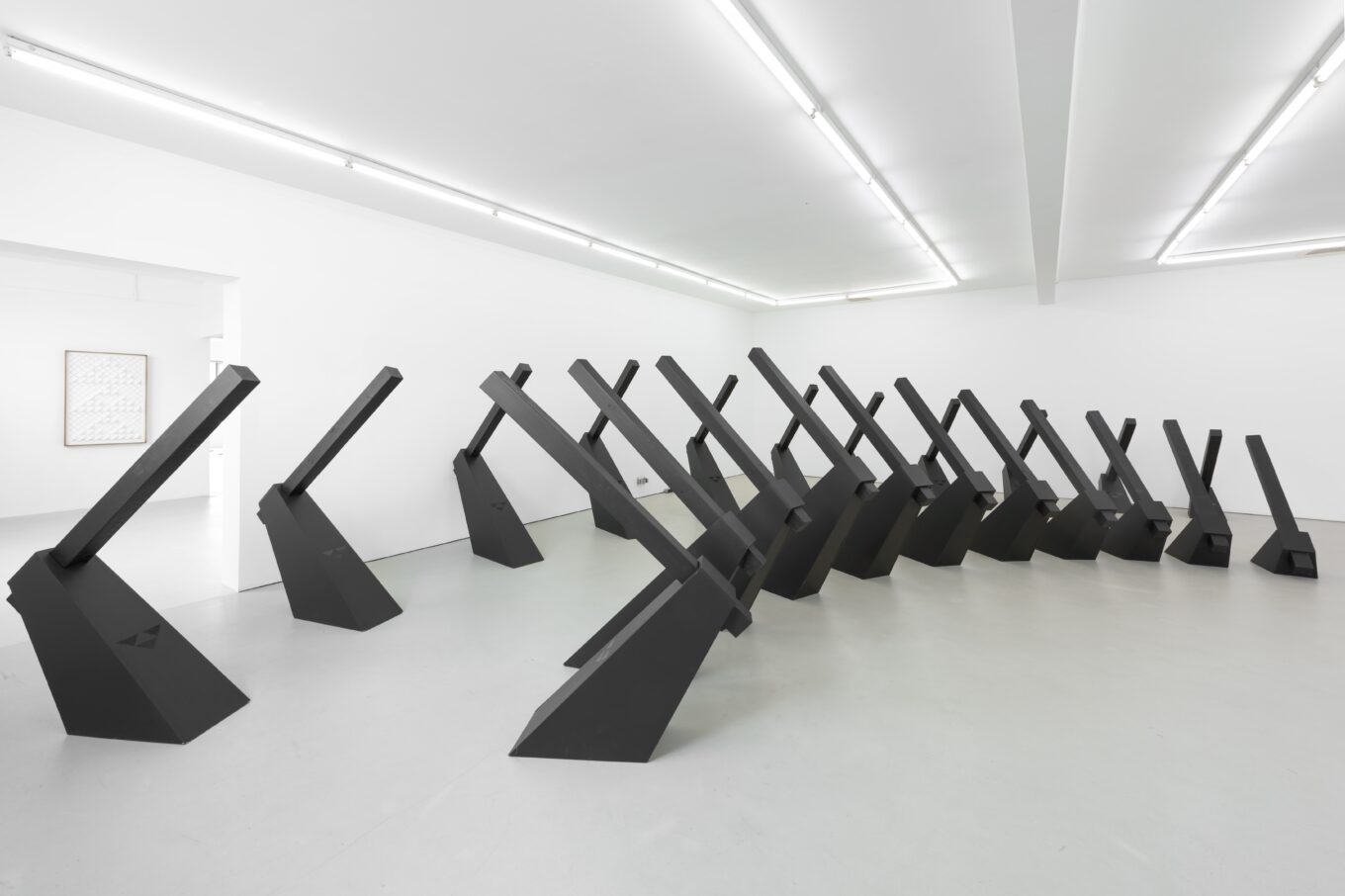Hōhua Thompson (Te Aitanga-a-Hauiti, Ngāti Kahu, Ngāti Awa, Ngāti Rangiwewehi) graduated with an MFA from Whitecliffe School of Fine Arts in 2021 and has realised projects with City Gallery Wellington, The Dowse Art Museum, Enjoy Contemporary Art Space, Blue Oyster Art Project Space, Aotearoa Art Fair, Toi Māori Gallery and Tairawhiti Museum. His first dealer gallery exhibition in Tāmaki Makaurau introduces local audiences to significant artworks previously exhibited in major public galleries in Te Whanganui-a-Tara Wellington, The Dowse Art Museum and City Gallery Wellington, alongside a new body of Kirihou works.
Working at scale, Thompson’s work reflects on intergenerational knowledge transmission, storytelling and kaitiakitanga. His practice combines traditional Māori art forms such a whakairo and tukutuku with modern materials and processes to communicate stories from his own whakapapa, and to examine how these stories may apply to wider Māori communities.
He has stated, The way I have had it explained to me, in te ao Māori we have two kinds of stories, purakau and pakiwaitara. The simplest way to describe the distinction between the two is that purakau are stories about gods: think the separation of Rangi and Papa, Tane’s ascension through the heavens; while pakiwaitara deal with the exploits of our tupuna: think the migration stories and all of the stories since then.
What both kinds of stories have in common is that they connect us through space and time to our ancestors, demonstrable in the substantial work Te Haehaenga O Pekehāua, recently exhibited in Memory Lines curated by Dr Kirsty Baker for City Gallery Wellington. Occupying and imposing on physical space with an evocative presence, a mōteatea chant is heard above, a means to reinforce Ngāti Rangiwewehi knowledge within the space. This mōteatea is a recording of Hōhua, his mother and father and cousin Casey, referencing the way in which mōteatea were often played on a marae as a way of handing down long stories associated with tribal boundaries and ancestral whakapapa.
One of the most important aspects of both pakiwaitara and purakau is the art of storytelling. It is typical that stories would be told in order to teach a desired lesson, sometimes posed more as open-ended questions rather than giving any straight answers, in order to inspire introspective thought and contemplation. In this way, Storytelling is an integral part of my artistic practice. It has become a way for me to interrogate the position we, as Māori, occupy in contemporary New Zealand society … This is all to say that stories of my ancestors’ exploits have greatly influenced the work that I make, and the stories I choose to share. For the last few years, the works that I have created have all stemmed from an older story, or rather, a series of intertwined stories.
Alongside Te Haehaenga O Pekehāua and newly created Kirihou works will be Te Kete Rokiroki, previously seen in different iterations at The Dowse Art Museum and The Blue Oyster Art Project Space. Te Arawa traditions speak of the kūmara being brought to Aotearoa by Whakaotirangi where it became increasingly important to Māori, as other crops from Te Moananui-a-kiwa proved difficult to grow. Kūmara are associated with the atua Rongomātāne, who is not only the atua of cultivated plants, but also of peace. This association gave the kūmara a chiefly reverence by our tupuna. So transforming the gallery space into a māra kūmara (kūmara garden), grown from tupu or ‘slips’ which are sprouts grown from kūmara from the previous harvest, and collectively tending them, is to take care of and share the stories and mana of not only my koro, but of all our tupuna. Te Kete Rokiroki becomes a venue for sharing and discussion through the collaborative maintenance of the māra kūmara, which provides us with fertile ground and stable footing with which to grow our own narratives to take forward.
Thompson has worked as a Curator of Community Exhibitions at Pātaka Art + Museum, a Collections Assistant at Museums Wellington, and Toi Māori Education and Audience Intern at Enjoy Contemporary Art Space. He also has a background in youth and social work, and is currently a youth coach in Rotorua.













